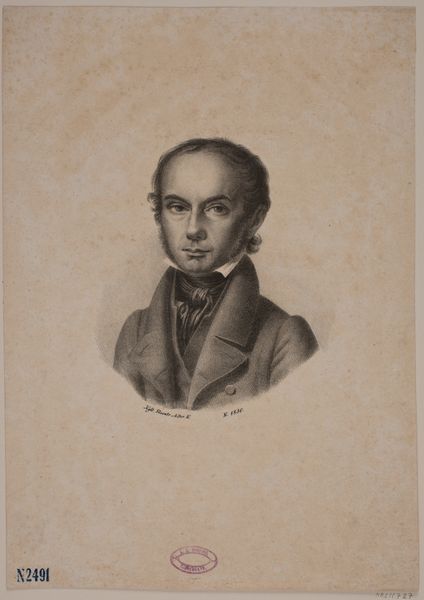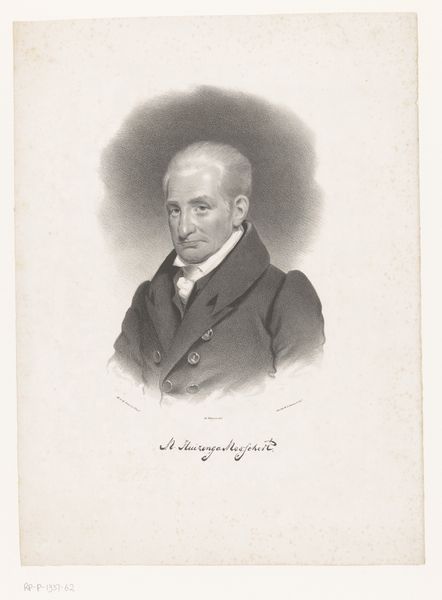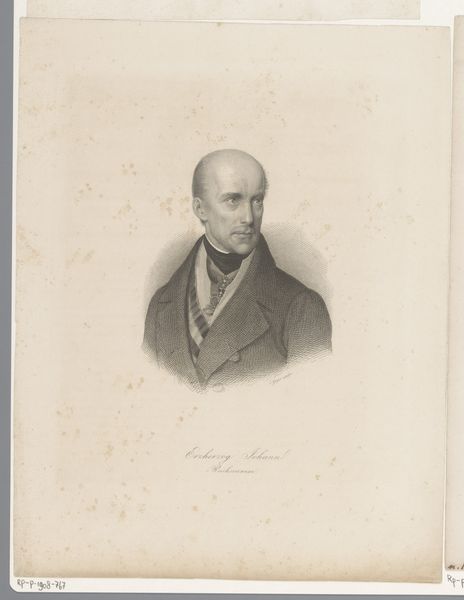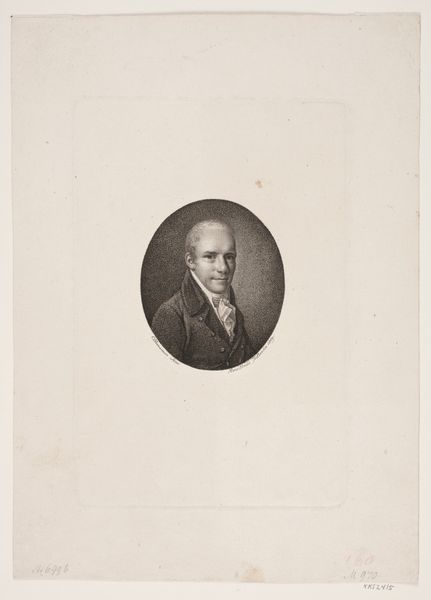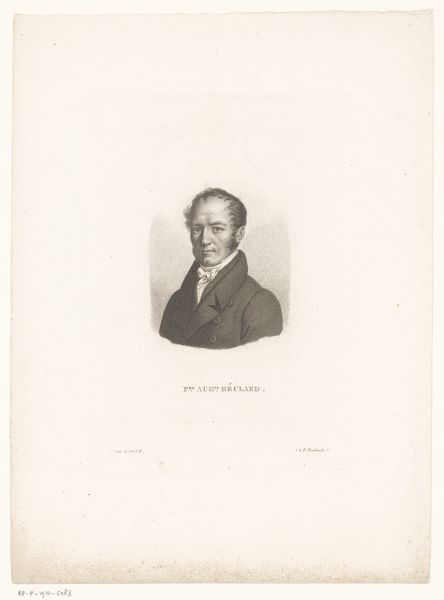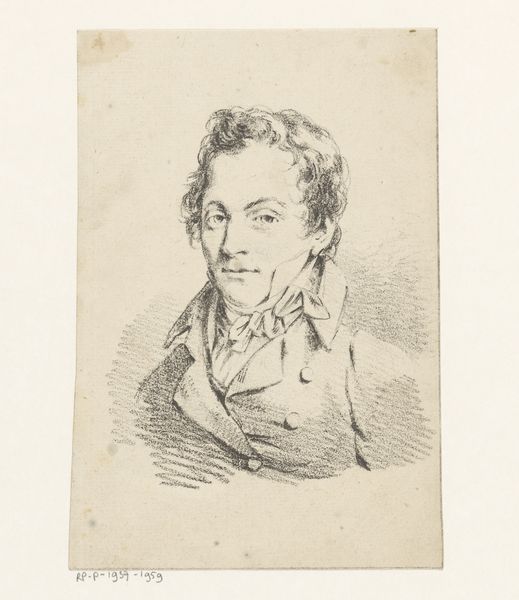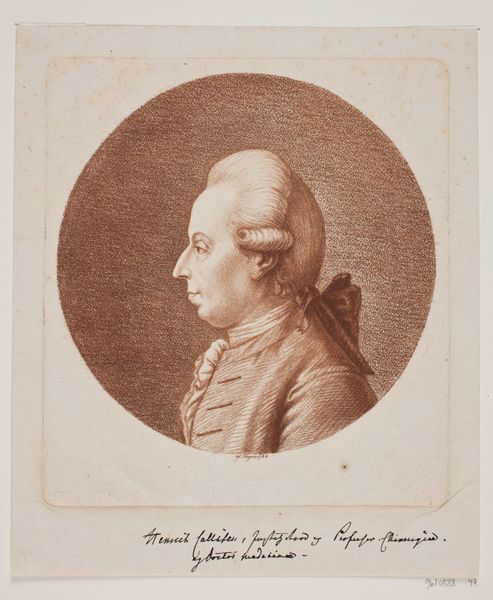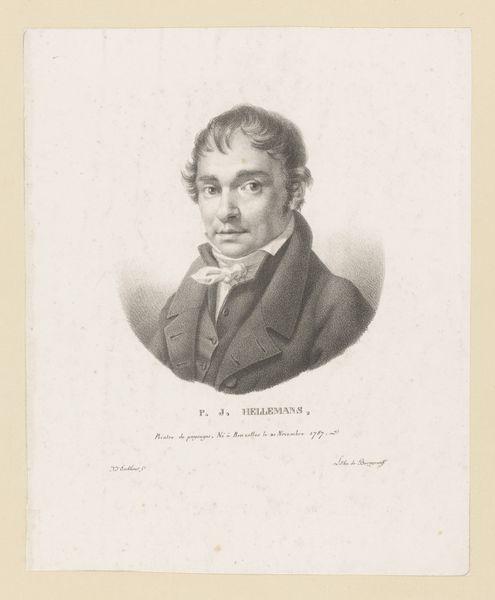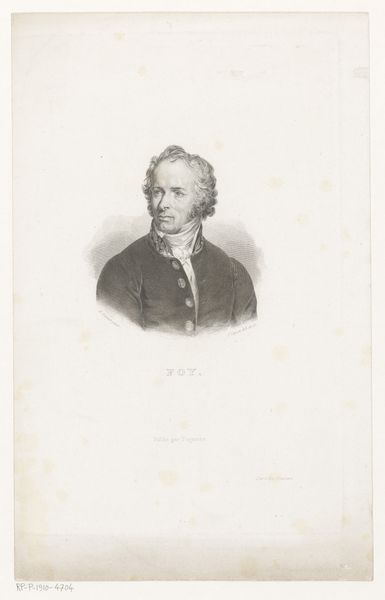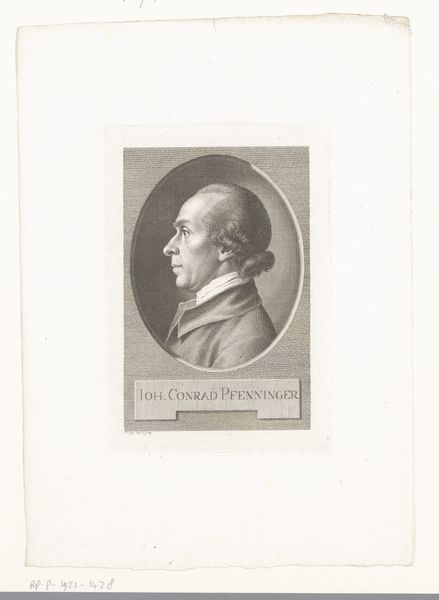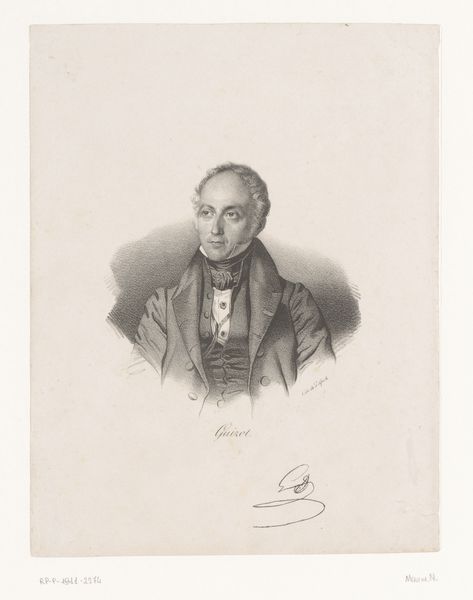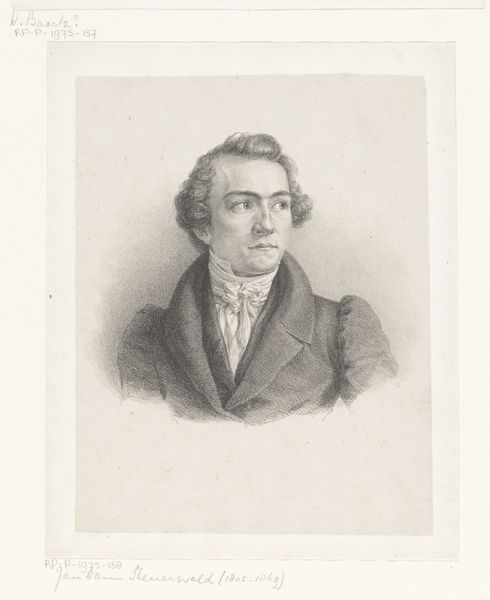
drawing, lithograph, print
#
portrait
#
drawing
#
neoclassicism
#
lithograph
# print
#
charcoal drawing
#
pencil drawing
#
portrait art
Dimensions: 323 mm (height) x 239 mm (width) (bladmaal)
Editor: Here we have a lithograph from 1830, titled “N. L. Høyden,” attributed to N.B. Krossing. It's a portrait and appears to be quite meticulously rendered. What strikes me is how the detail is achieved with a relatively simple medium. What’s your take on it? Curator: I'm interested in the lithographic process itself here. Think about the labor involved in creating such a detailed image, especially considering the limitations of early 19th-century technology. The surface of the lithographic stone would have demanded careful preparation. How does the act of reproduction itself—creating a print, a multiple—influence our understanding of the portrait’s value, compared to, say, a unique painted portrait? Editor: That’s a great point. The creation of multiples democratizes the image somewhat. So, rather than focusing on individual genius, you're emphasizing the process, the physical labor, and the distribution? Curator: Exactly. And beyond the technical aspects, consider the social context. Who was N. L. Høyden? Was this lithograph intended for mass consumption or a more limited circle? Understanding the intended audience and distribution channels deepens our understanding of its purpose and cultural value. It moves beyond a simple portrait to a document of social relations. The seemingly ‘simple’ medium speaks volumes when we examine its making and reception. Editor: So it’s about peeling back the layers of production and consumption to understand the work's true meaning. Curator: Precisely. Material matters – literally. The story isn't just in the image, but in the means of its creation and the context of its dissemination. Editor: I see how focusing on the material processes and context reframes my understanding of the image; it's more than just a portrait. Curator: It invites us to consider art as a product of labor, industry, and social networks, not just individual artistic expression.
Comments
No comments
Be the first to comment and join the conversation on the ultimate creative platform.
